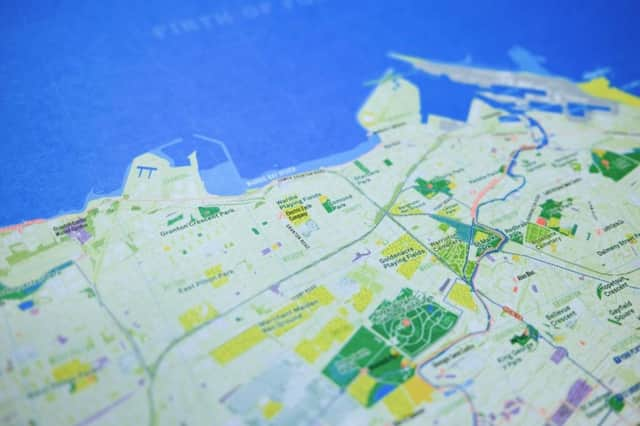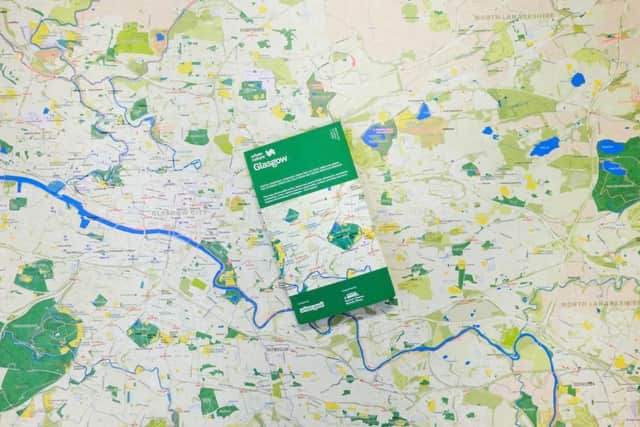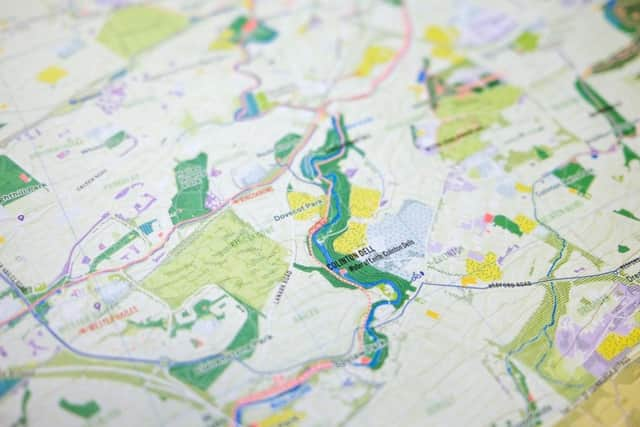Painting the town green: how Urban Nature Maps show Scotland's cities in a new light


Not that you'd know it by looking at all the empty mountains and pristine beaches that feature on Visit Scotland ads, but for most Scots, living in Scotland means living in towns or cities. Out of a total population of about 5.4 million, just 900,000, or approximately 17 per cent, live in rural areas. For the other 83 per cent, then, lockdown and its five mile travel limit have meant – among other things – a prolonged denial of access to the countryside.
One curious side-effect of this restriction of movement, however, has been a forced reassessment of what "countryside" actually means. City dwellers desperate to spend a bit of time in nature have discovered, often to their surprise, that the cities they have lived in for years are in fact full of green oases. If you're walking through the hidden valley in the middle of Holyrood Park, for example, with Arthur's Seat on one side of you, the back of Salisbury Crags on the other and not a single man-made structure anywhere in sight, are you any less "in the countryside" than you would be in the middle of Rannoch Moor? Is the grass any less grassy? Are the rocks any less rocky? And, come to think of it, if you're strolling through the wild, natural woodlands of the Dawsholm Park Nature Reserve near Glasgow's Maryhill, less than a kilometre from the rumble of Great Western Road, could you in fact be said to be more truly "in the countryside" than if you were walking across a heavily managed grouse moor somewhere in the Highlands, many miles from the nearest road?
Advertisement
Hide AdAdvertisement
Hide AdWith all these questions brought bubbling to the surface by the pressure cooker of lockdown, the timing could hardly be better for the release of two new maps made by Charlie Peel of social enterprise Urban Good in collaboration with freelance consultant Rob Bushby.


The Urban Nature Map of Edinburgh and the Urban Nature Map of Glasgow show us Scotland's two largest cities as we've never seen them before, colour-coded in such a way that green space and blue space are highlighted, with the built environment relegated to the background. Public parks and gardens and areas of woodland, grass and meadow, heath and moor are all picked out in various shades of green, while canals, rivers, lakes and ponds are highlighted in brilliant blue. Buildings and roads are still marked, but they appear as white – an absence rather than a presence – and so blend into the background. Walking trails and cycle trails, by contrast, are shown in bright orange and blue respectively.
Significantly, back greens, gardens and other neutral spaces are given a "background colour" of light green. Not all of these spaces will be green in reality, of course, but by giving the city the benefit of the doubt in this way, the maps encourage us to see our urban areas, not as seas of concrete with a few stubborn islands of green still clinging on, but as still-living components of the natural to which humans have added a few bits and pieces. (As a side-note, Ordnance Survey maps have a background colour of white for towns and cities. While it could be argued that this is an entirely neutral choice, in practice, because individual buildings are all outlined in black, the overall effect is to represent cities as predominantly grey, which no doubt helps feed the idea of them as places devoid of nature.)
Of course, this is by no means the first time cities have been reconceptualised through re-mapping. Rebecca Solnit's 2010 book Infinite City, on which she collaborated with cartographers Ben Pease and Shizue Seigel and designer Lia Tjandra, looks at San Francisco through an array of different filters. Perhaps the most entertaining map, "The World in a Cup," shows the city's "coffee economies and ecologies," not only marking its coffee shops, but also its reservoirs and water mains, its sewage treatment plants and its sewers.
The city's progressive politics are depicted in a map called "Truth to Power, " which shows, among other things, Rigo 23’s TRUTH mural, dedicated to Black Panther prisoners, and a statue to Simon Bolivar, liberator of South America. Th e next map in the book, however, titled "Right Wing of the Dove, " imagines the Bay Area as a "conservative and military brain trust, " showing the locations of arms manufacturers including Northrop Grumman and Lockheed Martin, as well as the corporate headquarters of oil company Chevron and, to the north of the city, Bohemian Grove, "annual gathering site of conservative power brokers.”


The point is, cities are incredibly complex organisms, and how we map them can have a huge impact both on how we think about them and how we live in them. The new Ur ban Nature Maps are valuable tools for helping us get the best out of our cities now, and also a source of inspiration for how we might improve them in the future.
The Edinburgh and Glasgow Urban Nature Maps were 50 per cent funded by Paths for All (a Scottish charity that champion everyday walking), with further support from Scottish Forestry, Glasgow City Council, Edinburgh and Lothians Health Foundation, and the Edinburgh Geological Society.
A message from the Editor:
Thank you for reading this article. We're more reliant on your support than ever as the shift in consumer habits brought about by coronavirus impacts our advertisers.
If you haven't already, please consider supporting our trusted, fact-checked journalism by taking out a digital subscription at https://www.scotsman.com/subscriptions